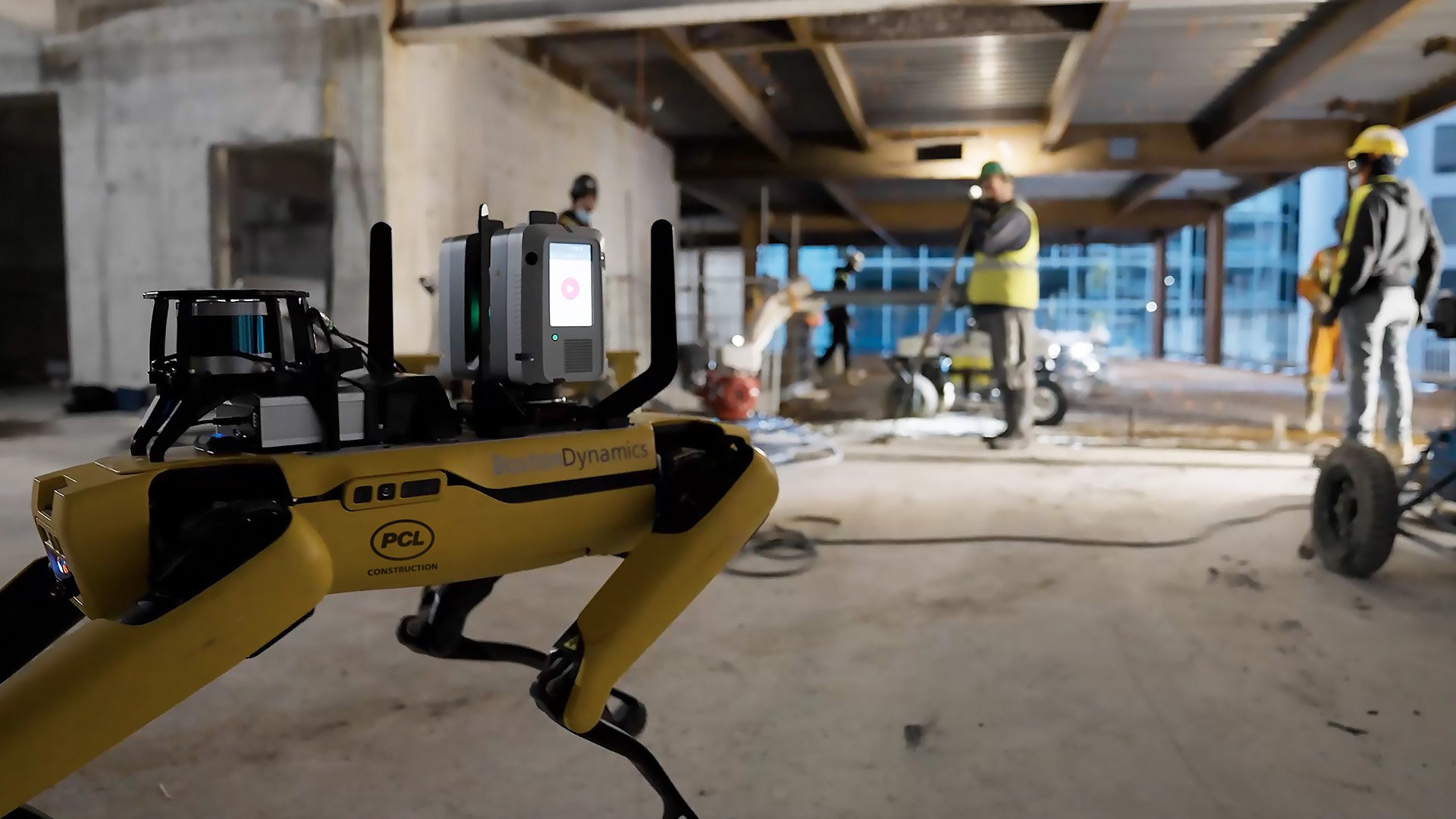Q&A: PCL’s Mark Bryant marries technology with business
Learn about how one of Canada’s biggest builders approaches innovation.

Robots are just one of many technologies PCL is experimenting with. – PCL
Coordinating technology at one of the country’s biggest general contractors is a big job.
As chief information officer for PCL, Bryant is responsible for the strategic and innovative advancement of information technology (IT) within the PCL family of companies. He has more than 30 years of IT expertise, having served in the financial services, software, manufacturing, and AEC (architecture, engineering, and construction) industries.
He is a recipient of numerous awards over the last decade including being named one of ENR’s Top 25 Newsmakers in 2018, and in 2019, Canadian CIO of the year for the private sector category, by the Information Technology Association of Canada.
We spoke with Bryant about how large contractors are implementing technology, what sort of technology is on PCL’s radar and how we can make construction smarter.
Be sure to catch Bryant in Vancouver, B.C. for 2023 Independent Contractors and Businesses Association (ICBA) Construction Innovation Summit on October 30th and 31st. He and many other industry experts will be discussing how to push the construction sector forward.
SiteNews:How do you approach modernization efforts at PCL?
Mark Bryant: I am in my 11th year now with PCL. When I joined, we were called systems and technology. But we rebranded and rethought how to deliver technology. Internally, today, we are called business technology. That is critical because my approach has always been to not deliver IT products from a technology perspective. It has been to partner with the business and their needs and marry with the business process by working with people. I get my hard hat and boots on and I walk the site with the team. I bring people that write code, people that do the help desk and others, we ask questions and we see how people in the field use our technology and software. We get to hear from people in the field: “I wish I could do this.”
What do you think are some of the most promising new technologies that have applications in the construction sector?
Microsoft recently announced Copilot. It’s not available in the wild right now and it uses ChatGPT. We actually just signed an agreement with them recently. We will be able to onboard a private preview for 300 users and the license lasts a year. It’s all shiny and new. I think the term “AI” gets thrown around quite a bit without actually being AI. It’s just mining data. What ChatGPT and Microsoft are doing with Copilot will allow us to mine our data easier. That’s what I am really excited about. I believe it’s going to enable knowledge management to adeptly and smartly mine PCL databases so we can make smart decisions and access knowledge across the company. I see it as an internal knowledge platform where we can privately and securely mine our own databases. That excites me. It’s akin to having Google but just for PCL. Copilot allows us to connect disparate data sources and ask PCL-specific questions.
What are some of the biggest challenges construction companies face when they begin digitizing their operations?
The cost of digitization and taking that leap to make the investment. The second, and it’s not necessarily in this order, is the change management component of people. You have people who have always done something a certain way and when you replace that with technology, that change is a challenge, a big one, and it’s not unique to construction. When you are investing in technology projects, you have to make sure it includes training employees. And you also have to make that training consistent, attainable and available years down the road. What happens in 12, 24 or 36 months when you hire hundreds more people? How do you get those people trained?
What prompted PCL to create its own team to develop software in-house?
We are an underserved market and now companies are wanting to service it. They see a massive amount of capital but they don’t understand the margins in construction. They see big numbers like $500-million buildings, but margins are relatively low and that’s why digitization hasn’t seen a major pickup. Startups often over-price their product and they often don’t understand construction. Our take on this is if our people have the intellectual property of what they want and if we have people internally that can build it, we can do it cheaper and better than the market can. We have multiple vertices and very unique construction products. When we build something internally we have more knowledge, so let’s just take out the middleman and the headache.
What steps do you think the industry needs to take to make construction smarter?
Lots of information is passed around and the efficiency of how that information passes isn’t great. Standardizing how things get handed off and built is one of the first things that should be tackled. In the UK, BIM is mandated but there is no structure around that in North America. It’s a free-for-all. Certain business processes could be leaned and the technology could be used both more effectively and efficiently. When it comes to safety, many use different products from a tech perspective. And probably all have slightly different processes. Maybe 80% are similar and 20% do something different based on things that have happened. It’s not necessarily a framework that drives consistency. And you have companies like Procore and Autodesk trying to own the complete lifecycle that compete. So there’s a lot of bifurcated standards and products from job to job which makes things challenging. There is no easy button. I would also say that if you look at the engineering space, it’s been consolidating rapidly. When I was at MMM Group, there were about seven acquisitions and then they got swallowed up by WSP. In Canada there are essentially two major ones: WSP and Stantec. You haven’t seen much of that in construction and there are pros and cons to that. The industry is very complicated, large and diverse. You have big and small players, thousands and thousands of companies. It’s a completely bifurcated industry with a complex supply chain. It’s mind boggling and it’s the oldest profession in human kind. We have always built as humans. And that’s what excites me… it’s constantly evolving and maturing and we will get there one day.
Sign up to attend the Construction Innovation Summit Oct. 30-31 where you can hear more from Bryant and other construction leaders.

